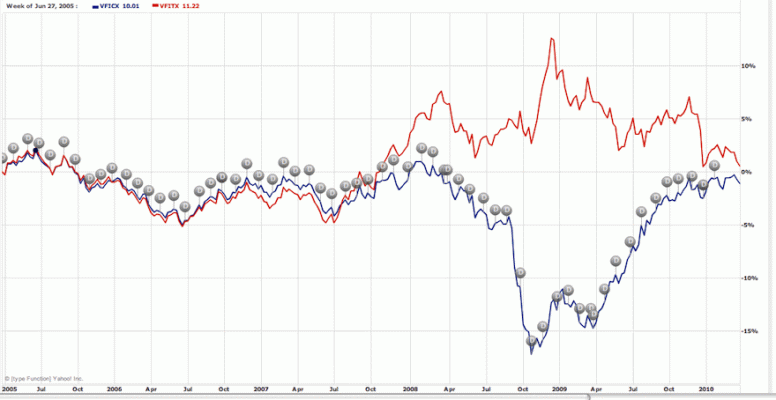sailfish
Dryer sheet aficionado
- Joined
- Jun 11, 2008
- Messages
- 49
Almost everyday there is another article in the media (newspaper,internet, etc) about a bond and bond fund bubble happening. I have about 1/2 of our retirement assets in bond funds of all different types. Treasuries,corporate, TIPS, Hi yield , Ginnie Mae etc.
If rates do go up and the value of the funds decrease, how low can these funds really go?
We are both 64 and retired recently , and hope to use the interest for our income. Most of the funds are short to intermediate term except the Ginnie Mae and Hi Yield (both Vanguard).
Bottom line is, that all this talk is scaring me into selling most of it and holding cash. I don't want to be a market timer . How are you bond holders out there assesing what's going on?
Thanks, Joe
If rates do go up and the value of the funds decrease, how low can these funds really go?
We are both 64 and retired recently , and hope to use the interest for our income. Most of the funds are short to intermediate term except the Ginnie Mae and Hi Yield (both Vanguard).
Bottom line is, that all this talk is scaring me into selling most of it and holding cash. I don't want to be a market timer . How are you bond holders out there assesing what's going on?
Thanks, Joe




